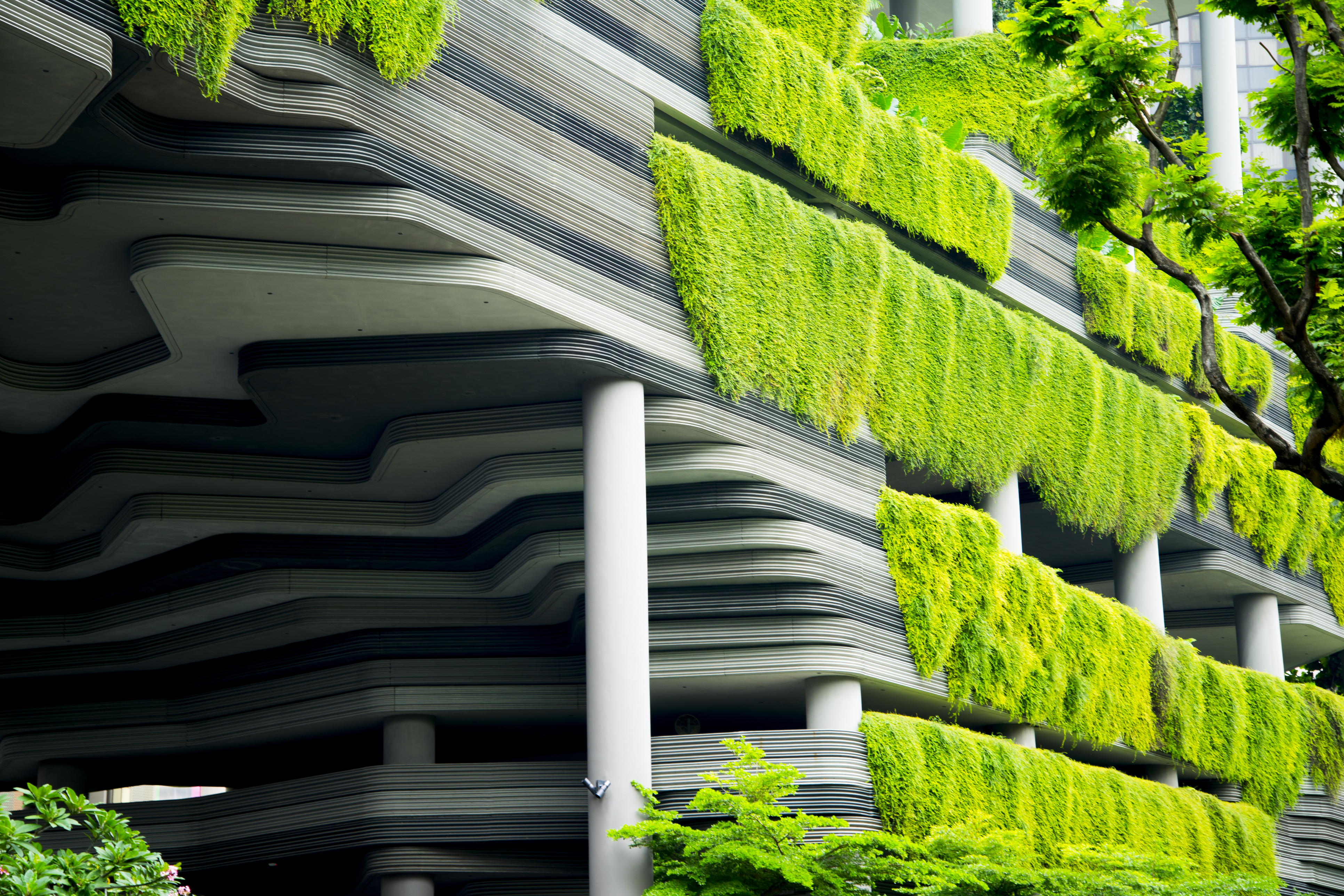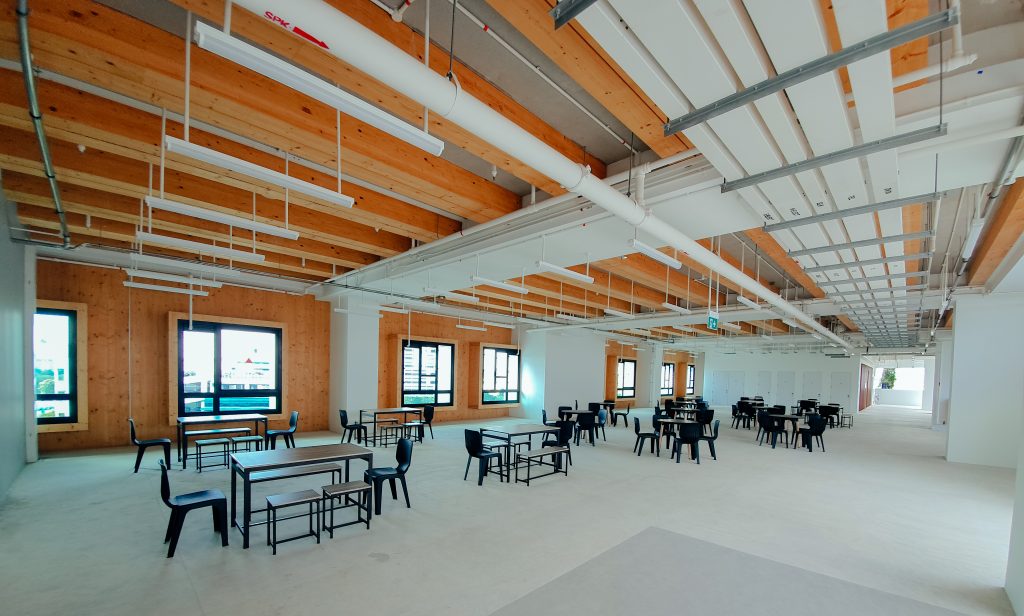Buildings account for over 20% of Singapore’s emissions. Greening our buildings is hence a key strategy for achieving our sustainability ambitions and fulfilling our commitment to mitigate climate change.
At BCA, we are setting concrete targets in line with the Singapore Green Plan 2030, a national sustainability movement involving Singaporeans and partners from all sectors to co-create solutions for sustainability.
Green buildings are not just better for the environment – it’s also better for its occupants. Research has shown that green buildings have lower levels of particulates, bacteria and fungi, and people who work, play and live in them reported less headaches, skin irritation and fatigue.
The COVID-19 pandemic has also highlighted the need to incorporate green features that help reduce the transmission of viruses for better indoor environmental quality..
Green buildings also make good business sense. While they may need a longer period to recoup the initial construction costs, they achieve greater energy and water savings throughout their lifecycle, and these savings outweigh the early investment cost.
Data has also shown that the payback period for the additional investment to green a building is less than six years, with many projects achieving payback within just two- to four-years.
|
|
 A building with biophilic design.
A building with biophilic design.
|
|
Making a green mark
To drive the greening of the built environment sector, BCA launched the BCA Green Mark certification scheme in 2005. This voluntary scheme evaluates new and existing buildings on their environmental impact and performance in areas such as energy efficiency and sustainability through a comprehensive framework.
For new buildings, developers and design teams are encouraged to design and construct green, sustainable buildings that are more climate-responsive, energy- and resource-efficient, and have healthier indoor environments.
For existing buildings, the owners and operators are encouraged to reduce the adverse impacts of their buildings on the environment and occupant health over the building’s life cycle.
Today, there are Green Mark schemes that promote sustainability in specific places, from restaurants and supermarkets to schools and even transit stations. Recognition is also accorded to workplaces that place equal emphasis on the quality of indoor environments and the health, comfort and well-being of its employees.
Raising the bar
To encourage firms to go beyond the highest Green Mark standards and drive innovations in energy management, BCA introduced the Super Low Energy (SLE) programme in 2018. The SLE programme supports companies to develop buildings with best-in-class technologies and achieve a minimum of 60 per cent energy efficiency improvement over 2005 levels.
Under this programme, commendations have been awarded to developments such as Singapore Management University’s ASouth3 building and the Surbana Jurong Campus.
BCA also launched SLEB Smart Hub, Singapore’s first digital knowledge centre for green buildings in the region. It is an open database that collates and analyses green building technologies such as air-conditioning, lighting, facade and renewable energy.
SLEB Smart Hub is more than a data repository. Based on a building’s current data set and users’ requirements, its Smart Advisor is able to recommend suitable green technologies and predict the associated costs and energy savings. It also allows building owners and designers to evaluate and source green technologies to help their buildings attain higher energy performance.
Since its launch, some 90 companies have benefitted from accessing the energy efficiency data of their building projects. One of them is Keppel Land, who is implementing five innovative technologies at Keppel Bay Tower. This includes a smart lighting system, which allows seamless transition in lighting levels according to building occupancy.
Keppel Bay Tower is Singapore’s first Green Mark Platinum (Zero Energy) commercial building and a participant in the Green Buildings Innovation Cluster (GBIC) Programme, which aims to testbed, showcase and exchange knowledge of energy-efficient solutions with stakeholders.
|
|
 Eunoia Junior College is the first project in Singapore to integrate Mass Engineered Timber (MET) with concrete for a high-rise building in Singapore. MET has a lower carbon footprint compared to steel or concrete.
Eunoia Junior College is the first project in Singapore to integrate Mass Engineered Timber (MET) with concrete for a high-rise building in Singapore. MET has a lower carbon footprint compared to steel or concrete.
|
|
Accelerating sustainability
As of end-2020, over 4,000 building projects in Singapore have met the BCA Green Mark standards. These cover about 123 million sqm, which covers more than 43% of the total gross floor area (GFA) of Singapore’s building stock.
Good progress has been made as an industry, but more can be done. In the latest edition of the Singapore Green Building Masterplan (SGBMP) that BCA developed with Singapore Green Building Council, along with industry stakeholders, the following key targets of “80-80-80 in 2030” were set:
- Green 80% of our buildings* by 2030
- Have 80% of new developments* to be SLE buildings from 2030
- Achieve 80% improvement in energy efficiency for best-in-class green buildings by 2030
(*by GFA)
Building a sustainable, low-carbon Built Environment requires a collective effort, and we look forward to achieving that together with you.
Are you a developer, building owner, project architect or M&E engineer looking for more support as you undertake deeper transformation in sustainability? Take reference from our case studies and related research, or check out our suite of Green Mark Incentive Schemes.